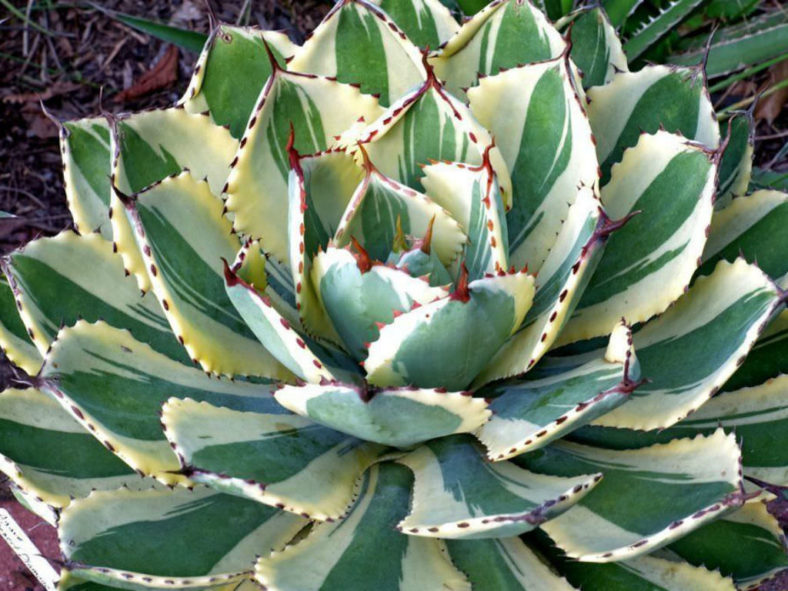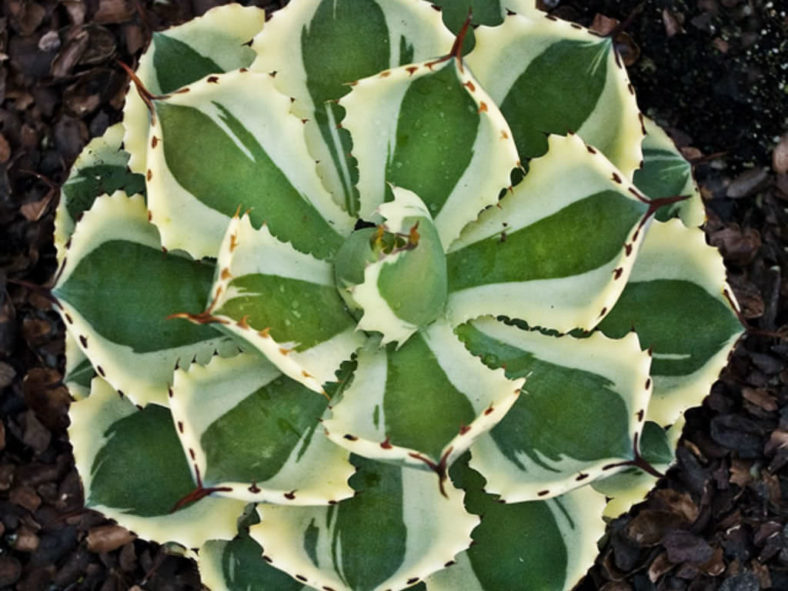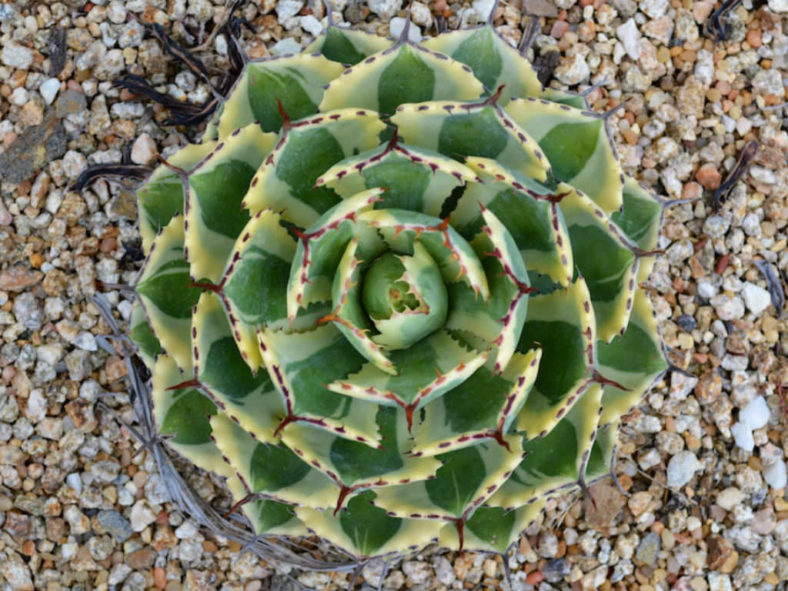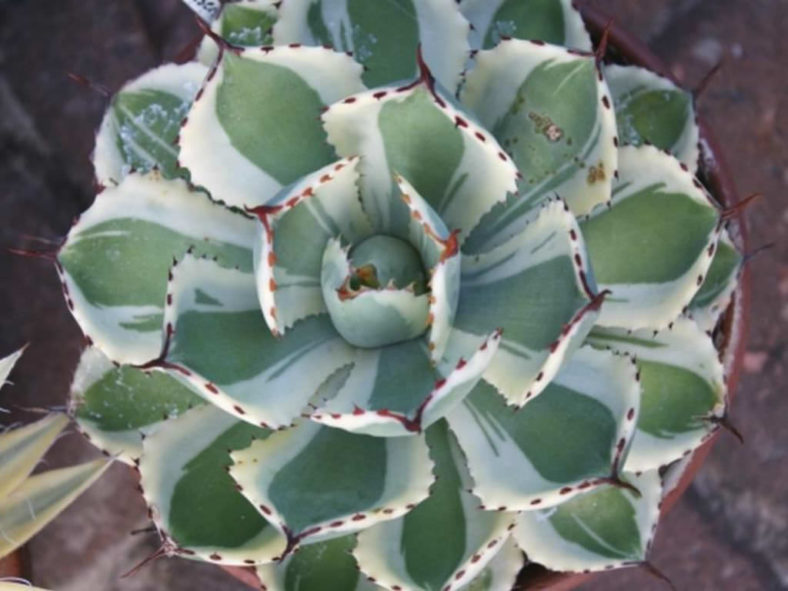Scientific Name
Agave 'Desert Diamond'
Common Name(s)
Variegated Butterfly Agave
Scientific Classification
Family: Asparagaceae
Subfamily: Agavoideae
Genus: Agave
Origin
Agave 'Desert Diamond' was discovered by Hans A. Hansen at a nursery in Zeeland, Michigan, United States, in 2005 as a sport in a tissue-cultured crop of Agave 'Kissho Kan'. It was introduced in 2013 and patented (PP26384) in 2016.
Description
Agave 'Desert Diamond' is an attractive succulent that forms a remarkably symmetrical rosette of short leaves with creamy-white margins and gray-green centers. The rosette can grow up to 4.4 inches (11 cm) tall and 6.8 inches (17 cm) in diameter. The leaves are spoon-shaped, up to 3 inches (7.5 cm) long, up to 2 inches (5 cm) wide, and 0.2 inches (0.5 cm) thick. The marginal and terminal spines emerge yellow, then transition to light brown, and finally age to cinnamon-brown. The terminal spine is up to 0.4 inches (1 cm) long.
This plant has more vivid variegation than its parent Agave 'Kissho Kan', and it grows slightly slower due to the extra white in the leaves.
Flowers have not yet been observed.

Hardiness
USDA hardiness zone 9a to 11b: from 20 °F (−6.7 °C) to 50 °F (+10 °C).
How to Grow and Care
Agaves are not difficult plants to grow. They're slow-growing and dramatic and will even thrive on a bit of neglect. If you're the type of person who likes to fuss with houseplants and water a lot, Agave is probably not the plant for you. If, however, you're the type of person who likes to set it and forget it, and you have a sunny window, Agave might be the way to go. Be aware that some large varieties will eventually outgrow your room (unless you have a large greenhouse), and Agave can be aggressive. They have irritating sap and sometimes very sharp thorns that can cause injuries to small children and even pets.
In general, Agaves do not need to be repotted every year. Most species commonly found in cultivation grow slowly and take long to outgrow their pot. It's also best to handle your Agave as little as possible since they do not like to be disturbed. When repot, refresh the spent soil with a new potting mix and make sure the plant is firmly anchored in its pot.
See more at How to Grow and Care for Agave.
Links
- Back to genus Agave
- Succupedia: Browse succulents by Scientific Name, Common Name, Genus, Family, USDA Hardiness Zone, Origin, or cacti by Genus
Photo Gallery


